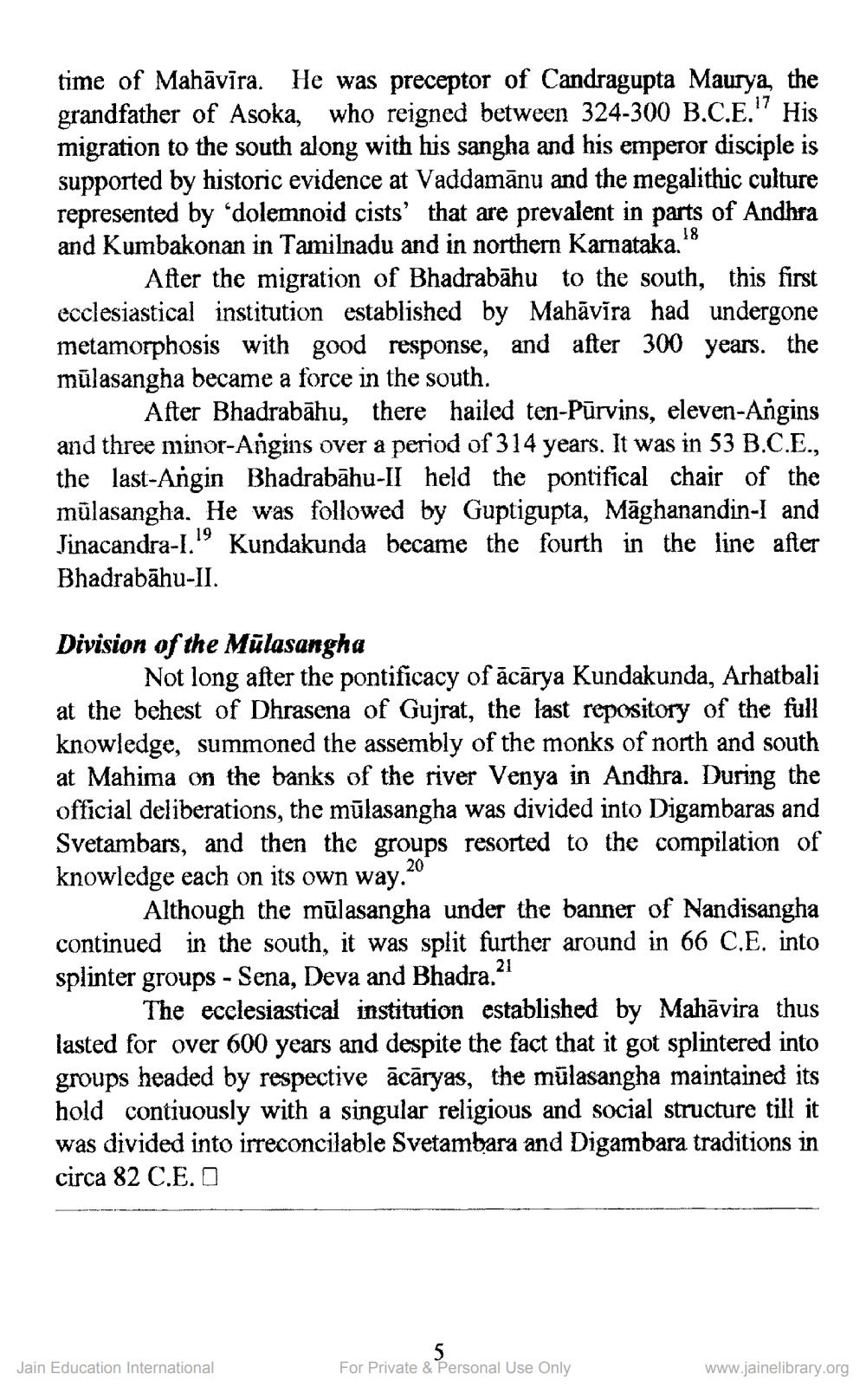________________
time of Mahāvīra. He was preceptor of Candragupta Maurya, the grandfather of Asoka, who reigned between 324-300 B.C.E." His migration to the south along with his sangha and his emperor disciple is supported by historic evidence at Vaddamānu and the megalithic culture represented by 'dolemnoid cists' that are prevalent in parts of Andhra and Kumbakonan in Tamilnadu and in northern Karnataka."
After the migration of Bhadrabāhu to the south, this first ecclesiastical institution established by Mahāvīra had undergone metamorphosis with good response, and after 300 years. the mūlasangha became a force in the south.
After Bhadrabāhu, there hailed ten-Pūrvins, eleven-Angins and three minor-Argins over a period of 314 years. It was in 53 B.C.E., the last-Angin Bhadrabāhu-II held the pontifical chair of the mūlasangha. He was followed by Guptigupta, Māghanandin-I and Jinacandra-1.'' Kundakunda became the fourth in the line after Bhadrabāhu-II.
Division of the Mülasangha
Not long after the pontificacy of ācārya Kundakunda, Arhatbali at the behest of Dhrasena of Gujrat, the last repository of the full knowledge, summoned the assembly of the monks of north and south at Mahima on the banks of the river Venya in Andhra. During the official deliberations, the mūlasangha was divided into Digambaras and Svetambars, and then the groups resorted to the compilation of knowledge each on its own way.
Although the mūlasangha under the banner of Nandisangha continued in the south, it was split further around in 66 C.E. into splinter groups - Sena, Deva and Bhadra.?
The ecclesiastical institution established by Mahāvira thus lasted for over 600 years and despite the fact that it got splintered into groups headed by respective ācāryas, the mülasangha maintained its hold contiuously with a singular religious and social structure till it was divided into irreconcilable Svetambara and Digambara traditions in circa 82 C.E. O
Jain Education International
For Private & Personal Use Only
www.jainelibrary.org




